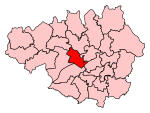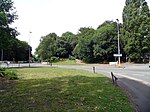Co-op Academy Walkden
Co-op Academy Walkden is a secondary school in Walkden, Greater Manchester. Formerly on Birch Road, the school is now located on Old Clough Lane, and serves Walkden, Worsley, Linnyshaw, Roe Green, Ellenbrook and Boothstown. In September 2011, the school moved into a new building off Old Clough Lane as part of the government's BSF (Building Schools for the Future) agenda, a process whose early planning stages had begun in November 2006. The culmination of that work is a building that offers accommodation for 1,500 pupils. The new building is available for the community to use during out-of-school hours and this is managed by Salford Community Leisure. Formerly known as Walkden High School, the school converted to academy status in December 2018 joining the Co-op Academies Trust.
Excerpt from the Wikipedia article Co-op Academy Walkden (License: CC BY-SA 3.0, Authors).Co-op Academy Walkden
East Lancashire Road, Salford Moorside
Geographical coordinates (GPS) Address Phone number Website Nearby Places Show on map
Geographical coordinates (GPS)
| Latitude | Longitude |
|---|---|
| N 53.5061 ° | E -2.3503 ° |
Address
Moorside High School
East Lancashire Road
M27 0AP Salford, Moorside
England, United Kingdom
Open on Google Maps








